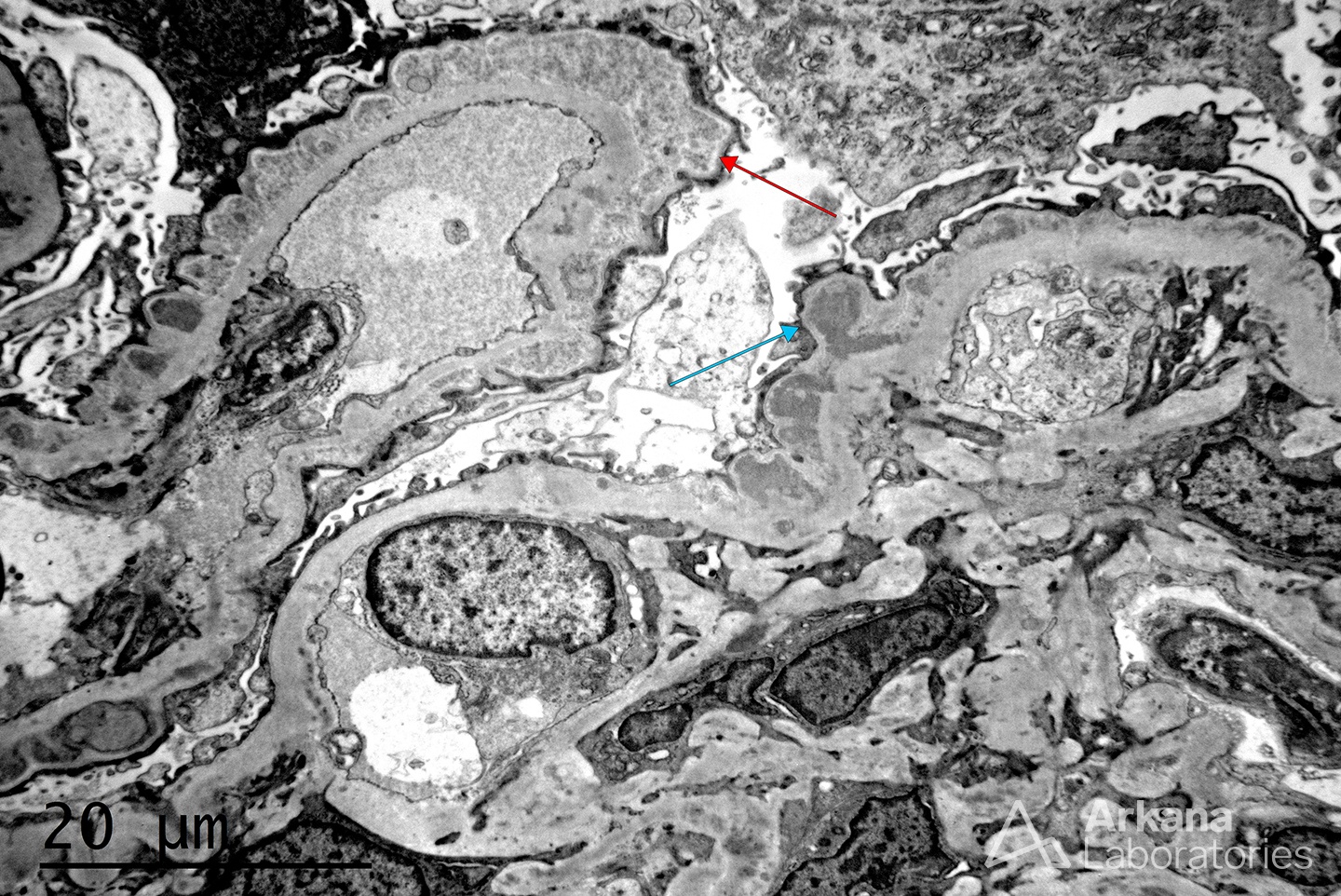A renal biopsy was performed on this 55-year-old female with a history of biopsy-proven membranous glomerulopathy status post immunosuppressive therapy, with a partial clinical response. The patient is currently being worked up for persistent subnephrotic proteinuria. This representative electron micrograph shows globally thickened capillary loops by a combination of intramembranous electron dense deposits completely surrounded by neomembrane (Ehrenreich and Churg stage III, blue arrow) and intramembranous electron lucent deposits with glomerular basement membrane remodeling (Ehrenreich and Churg stage IV, red arrow). These findings are compatible with a resolving membranous glomerulopathy. In light of these electron microscopy findings, the presence of only weakly positive staining by immunofluorescence (not shown) and stable subnephrotic proteinuria, this patient has likely achieved immunologic response and further immunosuppression may not be warranted. Finally, due to the presence of significant glomerular basement membrane remodeling, persistent proteinuria is expected in this patient.
Quick note: This post is to be used for informational purposes only and does not constitute medical or health advice. Each person should consult their own doctor with respect to matters referenced. Arkana Laboratories assumes no liability for actions taken in reliance upon the information contained herein.


